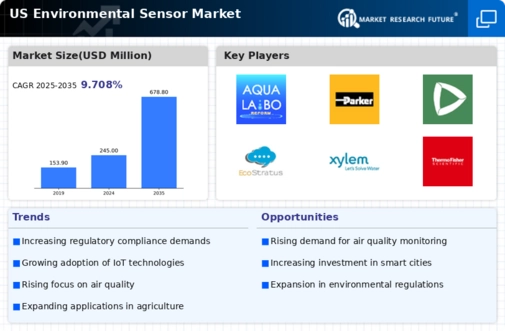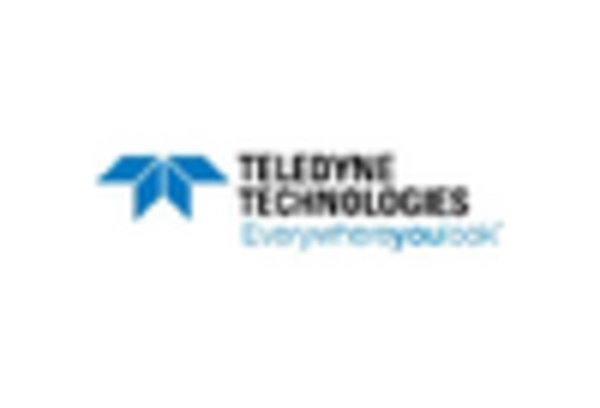Increased Environmental Awareness
Growing public awareness regarding environmental issues is significantly impacting the environmental sensor market. As communities become more conscious of pollution and climate change, there is a rising demand for effective monitoring solutions. This heightened awareness has led to increased funding for environmental projects, with government and private sectors investing heavily in sensor technologies. In 2025, it is estimated that investments in environmental monitoring technologies will exceed $3 billion in the US alone. This trend indicates a robust growth trajectory for the environmental sensor market, as stakeholders seek reliable data to inform policy decisions and promote sustainable practices.
Government Initiatives and Funding
Government initiatives aimed at environmental protection are playing a pivotal role in the growth of the environmental sensor market. Various federal and state programs are being implemented to monitor air and water quality, which necessitates the deployment of advanced sensor technologies. For example, the Environmental Protection Agency (EPA) has allocated substantial funding for projects that utilize environmental sensors to track pollution levels. In 2025, federal funding for environmental monitoring is projected to reach $1.5 billion, which will likely stimulate demand for innovative sensor solutions. This influx of government support is expected to bolster the environmental sensor market, facilitating the development of new technologies and applications.
Integration of Smart City Initiatives
The integration of smart city initiatives is significantly influencing the environmental sensor market. As cities adopt smart technologies to enhance urban living, the demand for environmental sensors that provide real-time data on air quality, noise levels, and other environmental factors is increasing. These sensors are essential for developing sustainable urban environments and improving the quality of life for residents. In 2025, investments in smart city technologies are expected to surpass $10 billion, with a substantial portion allocated to environmental monitoring solutions. This trend indicates a promising future for the environmental sensor market, as cities strive to become more resilient and environmentally friendly.
Rising Urbanization and Industrialization
The rapid pace of urbanization and industrialization in the US is contributing to the expansion of the environmental sensor market. As cities grow, the need for effective monitoring of environmental parameters becomes increasingly critical. Urban areas face challenges such as air pollution, waste management, and water quality issues, which necessitate the deployment of advanced sensors. The environmental sensor market is projected to grow by approximately 8% annually, driven by the demand for real-time data to address these urban challenges. This trend underscores the importance of environmental sensors in managing urban ecosystems and ensuring public health.
Technological Advancements in Sensor Design
The environmental sensor market is experiencing a surge in technological advancements that enhance sensor design and functionality. Innovations such as miniaturization, improved sensitivity, and integration with artificial intelligence are driving the market forward. For instance, the development of low-power sensors allows for prolonged deployment in remote areas, which is crucial for environmental monitoring. The market is projected to reach approximately $5 billion by 2026, reflecting a compound annual growth rate (CAGR) of around 10%. These advancements not only improve data accuracy but also expand the range of applications, from air quality monitoring to water quality assessment, thereby broadening the scope of the environmental sensor market.
















Leave a Comment